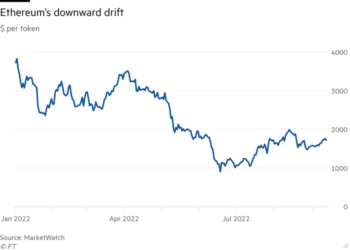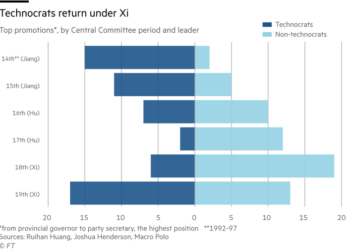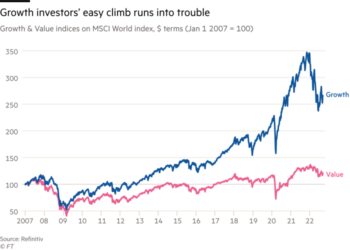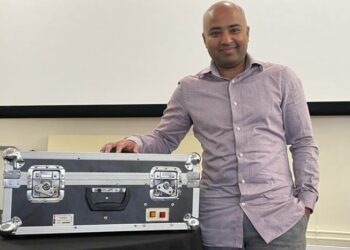Hello, Ken here from Tokyo. Despite the depressing Omicron wave, tech news is showing us strong dynamism in business. Nikkei Asia reported this week on China’s progress in advanced chip design led by ZTE (The Big Story). The FT commented on hypersonic missile developments in China and Russia (Nian’s top 10). Our Spotlight reveals Iris Ohyama’s robotics strategy, which is a bold move for a company known for its rather low-tech products such as rice cookers and vacuum cleaners. Stay safe till next week!
The Big Story — Exclusive
China’s ZTE is quietly making big strides in semiconductor design. The country’s number-two telecom equipment maker after troubled rival Huawei is using advanced technology to build processors for its 5G telecoms base stations, according to this exclusive in Nikkei Asia.
ZTE’s emergence shows that while US pressure has clobbered the operations of Huawei, a Chinese peer has emerged to take up the running.
Key developments: ZTE is using the 7-nanometre chip production technology of TSMC, the Taiwanese contract manufacturing giant, as well as its advanced chip packaging technology to build the processors that power electronic devices including smartphones, servers and base stations.
For comparison, industry leaders AMD and Nvidia also use TSMC’s 7-nm chip technology for their flagship CPU and GPUs, while AMD, Nvidia, Xilinx and Broadcom have adopted its advanced chip packaging technology.
ZTE is also considering using chip manufacturing technology that is even more advanced than the 7-nm version, sources told Nikkei Asia.
Upshot: The US blacklisting of Huawei has hit that company’s business hard but other Chinese challengers are advancing close to the technological cutting edge. ZTE is one of them.
Nian’s top 10
-
SoftBank is looking to bypass the UK and list Arm Holdings in the US after its planned $66bn sale to Nvidia fell through. (FT)
-
Exclusive: Japanese carmaker Nissan will fully focus on electric vehicles as it ends development of new combustion engines in big markets except the US. (Nikkei Asia)
-
North Korea targeted the UN’s atomic agency in cyber attacks. (Nikkei Asia)
-
South Korea will monitor the travel of chip engineers to prevent China from poaching them. (Nikkei Asia)
-
China and Russia’s advances in hypersonic weaponry pose threats to the US as it plays catch-up. (FT)
-
Exclusive: Japanese conglomerate Toshiba will invest $873mn in a new semiconductor fab, doubling its power-chip production capacity. (Nikkei Asia)
-
China, the US, and Europe are competing to set 5G telecoms standards, escalating national security and geopolitical rivalries. (FT)
-
Wall Street Journal owner News Corp is probing a cyber attack that was allegedly linked to and benefited China. (FT)
-
Japan is more reliant on China for critical tech imports than other major economies, raising important economic security questions. (Nikkei Asia)
-
Mark Zuckerberg blamed TikTok, owned by China’s ByteDance, for taking profits and users away from Facebook. (FT)
Our take
The panic sell-off of Meta Platforms in the US stock market last week showed how investors were caught off guard by some gloomy trends the company disclosed in its earnings call. In particular, the first-ever quarterly decline in Facebook’s daily active users was a wake-up call to many investors.
Facebook’s DAU in North America had peaked as early as the second quarter of 2020, but it was Asia-Pacific that had been driving its global user base. Thus, the sudden stall in Apac DAU growth last quarter was a genuine shocker. The Apac DAU for the December quarter stood at 806mn, almost flat from the 805mn in the preceding quarter.
The figure revealed that the social network was facing declining popularity among youngsters in mature Asian economies such as Japan — just as in North America. In one example, the central library of Hokkaido University announced in December that it was shutting down its Facebook account, citing “a decrease in student users”.
A survey by Japanese mobile operator NTT DoCoMo last year revealed that only 16 per cent of teenage respondents had Facebook accounts, while more than 60 per cent had Instagram accounts.
In emerging Asia, Facebook’s penetration has reached fairly high levels, making continuous rapid user growth difficult. The number of Facebook users is estimated to have topped 350mn in India, where only 130mn people speak English as their third language at least. Most non-English speakers there prefer domestic social networks. Even in a frontier economy such as Myanmar, Facebook’s growth has been only as fast as web usage itself.
— Ken
Smart data

Asia House, a UK think-tank, has calculated the “readiness” of Asian countries to embrace green finance and digitalisation. The two measures are seen as important auguries for sustainable, equitable and productivity-driven growth.
China leads other countries in both metrics, with 72 points for each. Green finance refers to financing activity aimed at better environmental outcomes, such as green bonds. China’s issuance of green bonds hit a record last year.
India was the lowest among the eight economies in terms of readiness for digitalisation, at 36 points, due in part to low fixed broadband coverage.
Spotlight
Akihiro Ohyama is aiming to make commercial robots his company’s next big money-spinner. The chief executive of home goods and electronics maker Iris Ohyama is investing in a tie-up with SoftBank Robotics to develop robots that will do the work of humans as Japan’s society ages.
The investment was put at just ¥10bn ($87mn) but the joint venture has set a goal of generating ¥100bn ($866mn) in cumulative revenue through 2025. Ohyama said the progress toward the target was “on track and going smoothly” but did not elaborate.
“In the service industry during Covid, restaurants in particular aren’t recovering the manpower they have lost in a meaningful fashion,” said Ohyama. He added that there was a plan to offer restaurants advanced technological support services that come with robots.
“Labour shortages will definitely come to western countries in one to two decades due to ageing populations,” said Ohyama. “Japan will serve as a test market, so to speak, and we intend to set a precedent here.”
Art of the deal
Taiwan’s GlobalWafers said it will pursue a three-year, $3.6bn expansion plan in the US, Europe and Asia after Berlin failed to approve its acquisition of German peer Siltronic.
GlobalWafers, the world’s third-largest maker of silicon wafers for chips, said it will carry out the expansion plan from this year through 2024. About $2bn will go towards building a new factory in a yet-undecided location and $1.6bn is earmarked to increase capacity at existing facilities around the world.
Doris Hsu, chair and chief executive of GlobalWafers, said the considerations affecting where to locate the new factory included “talent supply, proximity to clients, costs of electricity, costs of operation and the subsidies by the governments”.
The extra capacity from existing facilities will come online from the second half of next year, while the new plant will become operational in 2024, Hsu said.
GlobalWafers operates 15 factories in nine countries, including in the US, Taiwan, Japan and South Korea. It also has three factories in Europe.












